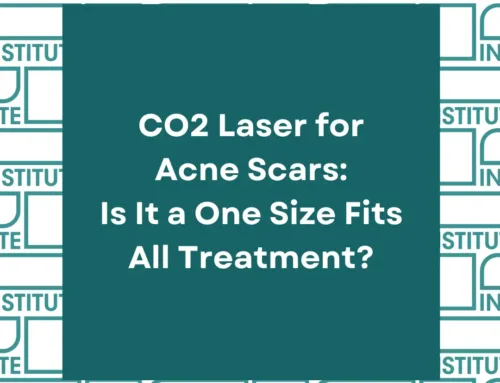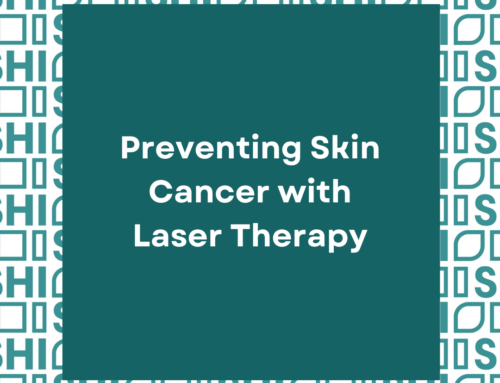PRP vs. PRF vs. Exosomes: Which is Best for Scar Healing?
Introduction
The way that scars are treated has evolved. There are now ways to treat them without only relying on surgery or laser resurfacing. Newer biologic treatments have allowed stimulation procedures that allow the body’s own healing process to take care of scars. Regenerative medicine has revolutionized the way we treat scars. Instead of only relying on surgery or laser resurfacing, we can now stimulate the body’s own healing process using advanced biologic treatments. Three of the most popular options are PRP (Platelet-Rich Plasma), PRF (Platelet-Rich Fibrin), and Exosomes. These treatments have a shared foundational approach to fixing scars, but they each have their own unique advantages. The Scar Healing Institute is spearheading techniques and new uses to get the best results with advanced biologic treatments.
PRP – Platelet-Rich Plasma
The approach to PRP is simple, a small amount of blood is drawn and spun in a centrifuge to isolate the platelet rich portion also known as “liquid gold”. These platelets are packed with growth factors like vascular endothelial growth factor (VEGF), which boost collagen production, improve texture, and encourage healthy skin regeneration. PRP has an unique advantage with newer scars that have mild texture issues. The treatment introduces a burst of growth factors that make a noticeable difference. When applied to the sites the concentrated growth factors trigger a regenerative response that can enhance the way that the skin looks and feels.
PRF – Platelet-Rich Fibrin
Platelet-rich fibrin (PRF) is generated through a technique akin to platelet-rich plasma (PRP), with significant alterations maximized to its regenerative potential. Patient blood is slowly centrifuged without anticoagulants. Slow-speed centrifugation preserves more platelets, leukocytes, and fibrin within the matrix and provides a three-dimensional fibrin scaffold bioactive-rich. In contrast to the temporary release of growth factors by PRP, PRF releases them over a sustained, physiologic timeframe of days and in addition releases platelet-derived growth factor (PDGF), vascular endothelial growth factor (VEGF), and transforming growth factor beta (TGF-β).
It is both biologic reservoir and regenerative scaffold that, within a timeframe, releases growth factors into surrounding tissue, stimulating fibroblast activity, angiogenesis, and extracellular matrix remodeling. PRF’s delayed release pattern makes it particularly effective for the reconstruction of moderate scarring and for inducing deeper rejuvenation of the skin, allowing longer-term repair of tissues and more stable collagenation.
Exosomes
Exosomes are extracellular cell-released vesicles ranging from 30–150 nanometers in size that play the main role in intercellular communication. Exosomes are a dense shipment of growth factors, cytokines, lipids, and control microRNAs that govern cellular repair mechanisms. During scar remodeling, exosomes control the activity of the fibroblasts to suppress it away from the fibrotic myofibroblast phenotype and keep the collagens produced in a ratio of type I to type III fibers. This results in reduced abnormal extracellular matrix deposition and return to a more normal dermal architecture.
Exosomes also induce angiogenesis through VEGF signaling, proliferation and migration of keratinocytes, and suppression of pro-fibrotic signaling pathways such as TGF-β/SMAD. These actions induce remodeling of scar tissue, improve elasticity of the skin, and normalize pigment distribution. Being allogeneic and not requiring harvesting from blood, exosome therapy is minimally invasive but highly effective in structuring and functionating the scar tissue.
Which One Should You Choose?
The right treatment depends on your scar type, age of the scar, and your desired results:
- For mild or newer scars, PRP can deliver quick and noticeable improvement.
- For moderate scars with deeper texture changes, PRF offers a stronger, longer-lasting healing effect.
For severe, long-standing, or resistant scars, Exosomes often produce the most dramatic transformation.
At the Scar Healing Institute, we frequently combine complementary modes of treatment to achieve synergistic advantages in scar remodeling. Subcision scar release mechanically disrupts fibrotic tethering beneath the skin and restores the dermis’s mobility; with the supplement of exosome therapy, the regenerative signaling molecules enhance cellular repair, angiogenesis, and extracellular matrix reorganization to provide faster and more uniform healing. In parallel to this is the application of platelet-rich fibrin (PRF), which has high growth factor and sustained-release fibrin scaffold, and is generally used with fractional laser resurfacing to induce fibroblast stimulation, neocollagenesis, and dermal elasticity. Along with synergizing regenerative biologics and procedural treatments, we treat both the structural and molecular components of scarring and have more durable and natural aesthetic outcomes.
Why Choose Scar Healing Institute?
Our practice is exclusively dedicated to sophisticated scar reconstruction and regenerative medicine by blending state-of-the-art technologies with evidence-based therapies. We utilize modalities like fractional laser resurfacing, platelet-rich plasma (PRP), platelet-rich fibrin (PRF), exosome therapy, subcision, CROSS (chemical reconstruction of skin scars), scar revision, dermabrasion, and other biologically active therapies in an attempt to stimulate collagen reconstruction, neo-vascularization or neo-angiogenesis, and cell repair at the scarring location. Due to the fact that every scarring is an individual dermal pattern of destruction, dermal fibroblast behavior, and extracellular matrix construction, we are extremely individualized in our treatment approach. Through an integration between scientific expertise with personalized nurturing treatment, we not only strive to diminish external scarring but also achieve normal architectural construction within the epidermis in an attempt to optimize longer-term functional as well as esthetical results. We recognize each scarring is an individual entity—and so is every patient’s healing process.
Conclusion
PRP, PRF, and exosomes are some of today’s most sophisticated tools in scar therapy, providing focal therapies for both superficial and deep tissue reconstruction. By leveraging the inherent biologic signaling mechanisms within our bodies, these therapies stimulate orderly collagen reconstruction, dampen inflammation, and expedite healing, providing solutions to scarring’s structural and aesthetic problems. At the Scar Healing Institute, we personalized our regeneration treatments so you receive maximum results. With proper combination therapies, scars no longer need to control how you appear or limit how you feel, you now can experience substantial restoration of both face and self-confidence with state-of-the-art regeneration medicine.
Schedule an Appointment
Scar Healing Institute
Scar Healing Institute is committed to developing the most effective treatments for scarring. Our team of scar revision specialists are continually inventing the latest technologies and formulas to deliver the best results for our patients.




